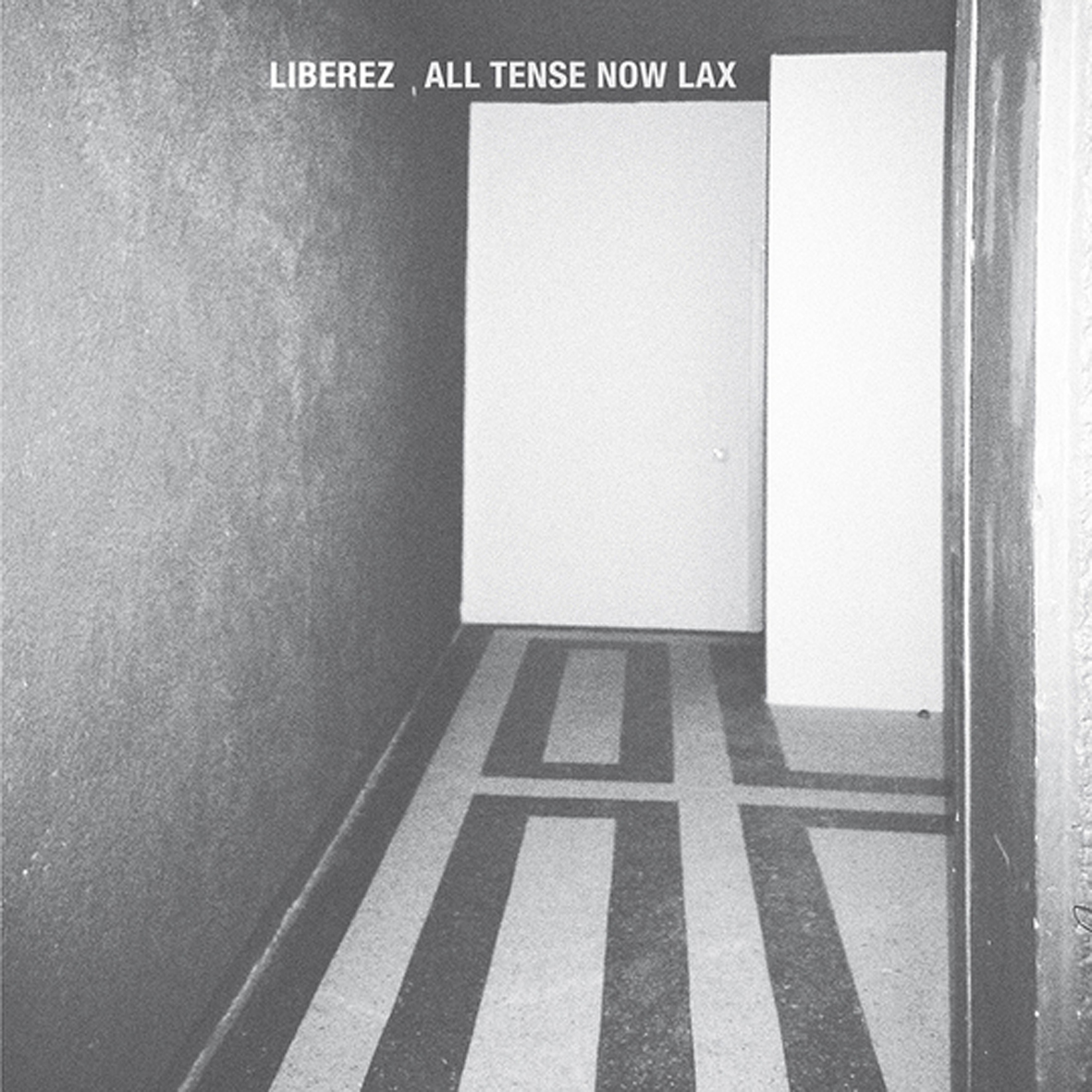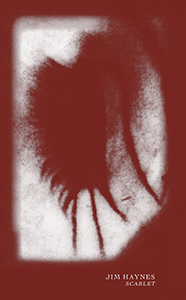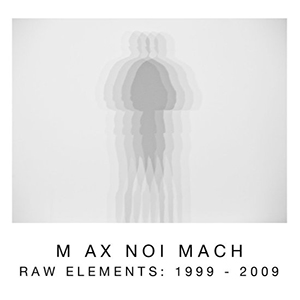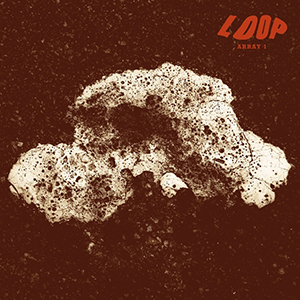- Administrator
- Albums and Singles
 Functioning excellently as a conceptual split release between a legendary band (Controlled Bleeding) and a younger project (Sparkle in Grey) that pull from similarly idiosyncratic backgrounds, the two halves of this record differ greatly, but blend thematically. Both present genre defying, stylistically diverse and unconventional instrumental music that are another notch in their impressive discographies.
Functioning excellently as a conceptual split release between a legendary band (Controlled Bleeding) and a younger project (Sparkle in Grey) that pull from similarly idiosyncratic backgrounds, the two halves of this record differ greatly, but blend thematically. Both present genre defying, stylistically diverse and unconventional instrumental music that are another notch in their impressive discographies.
Controlled Bleeding's half of this album, "The Perks of Being a Perv" is a six song suite that pulls from all the different eras of Paul Lemos' long standing band.The brief bookending pieces capture the bizarre jazz-tinged era of the project."Intro" is an amalgam of jazzy percussion and strings, along with scat vocals from the late Joe Papa, while "Birdcanned Pt. 2" is a more blistering, erratic outburst that calls to mind Naked City's "hardcore miniatures".Between these two are slew of pieces that touch most largely on the band’s instrumental rock sound, while even giving a throw back to their harsh noise moments.A song like "Garage Dub" has an almost surf rock mood to it, with a rapid tempo and some frequent and dramatic lead guitar moments that never drift too far into the world of self-indulgence, but get as close as they can without becoming a bad thing.
Both "Springtime in Brooklyn" and "Birdcanned Pt. 1" emphasize a bit more synth in addition to Lemos' guitar, and at times the electronic element becomes a deranged take on new age instrumental music.The instrumental components are similar, but Lemos and crew assemble them in unexpected and bizarre ways that are very effective.The lengthy centerpiece "Perks, Pt. 1" is where the band's noise days come back in force.Harsh and raw noise defines the lengthy piece, but paired with a distinct rhythm and what sounds like guitar shredding that is completely obliterated by distortion and effects.Towards its closing moments the piece falls apart into delicious chaos, but the compositional build and subsequent deconstruction is where the band’s brilliance shines through.
Sparkle in Grey's "The Rant of the Idiot Savant" is a single lengthy piece split into four distinct movements.The Italian quartet takes a page from Controlled Bleeding's history of mutating and recontextualizing conventional music into completely peculiar forms.The first two segments are heavily built around Franz Krostopovic's plinking piano and subtle electronics from Matteo Uggeri and Luca Sigurta, and later strings and Alberto Carozzi’s guitar.Until mid-way through the second section, the piece is rather calm and mellow.That is until a bizarre percussion passage cuts through and brings a narrative, film-score like drive to the piece.
The second two segments begin a transition into dissonance.On part three, the electronic elements become more and more pronounced, as well as chaotic, and reach a climax before withdrawing, paired excellently with the pensive piano to result in a distinct contract.The final section adds in a massive synthetic beat, pounding along with the piano accents and plucked strings to mix the peaceful and the boisterous.Each project also supplies a single, shorter form piece to act as an epilogue for this album.Sparkle in Grey's "Mevlano Pt. 1" is a piece of sweeping electronics that evolves into a hallucinogenic experience, while CB's "Live in Brooklyn, 2012" is a similar bit of mellow ambience and long, dramatic guitar solos.Neither piece is as strong as their respective longer form performances, but make for a pleasant enough conclusion.
Controlled Bleeding and Sparkle in Grey are two distinct bands that do not necessarily sound like one another, but they share a similarly gleeful sense of experimentation.Both halves are engaging, well conceived works of music featuring artists who are extremely adept at their instruments, but choose to create extremely strange and confrontational music.Fans of Controlled Bleeding’s expansive career will find much to love here, both from that band and the less familiar Sparkle in Grey.
samples:
 
Read More
- Administrator
- Albums and Singles
Chris Carter, Cosey Fanni Tutti (Chris & Cosey / Throbbing Gristle) and Nik Colk Void (Factory Floor) expand and explore onward from their critically acclaimed 2012 debut collaborative album Transverse. Featuring their distinctive metallic guitar sound, resounding bass lines, electro industrial rhythms and heavily processed vocals this album is not for the fainthearted.
Out 9/11/2015.
More information can be found here. And here is a brief teaser video.

Read More
- Administrator
- Albums and Singles
 John Hannon is truly a man after my own heart, as his Liberez project recaptures an urgency, adventurousness, mystery, and revolutionary spirit that has been largely missing from underground music for a very long time.  In some respects, All Tense Now Lax picks up right where 2013's stellar Sane Men Surround left off, bringing back both vocalist Nina Bosnic and an unholy mélange of bludgeoning junkyard percussion and Greek/Eastern European violins.  In other ways, however, All Tense is quite different, largely abandoning any quietier moments of ethnographic forgery in favor of a heavier, pricklier, more anarchic, and more collage-damaged assault.
John Hannon is truly a man after my own heart, as his Liberez project recaptures an urgency, adventurousness, mystery, and revolutionary spirit that has been largely missing from underground music for a very long time.  In some respects, All Tense Now Lax picks up right where 2013's stellar Sane Men Surround left off, bringing back both vocalist Nina Bosnic and an unholy mélange of bludgeoning junkyard percussion and Greek/Eastern European violins.  In other ways, however, All Tense is quite different, largely abandoning any quietier moments of ethnographic forgery in favor of a heavier, pricklier, more anarchic, and more collage-damaged assault.
The beauty of Liberez is that it is studio project devoted to one man’s distinct vision and that that man (Hannon) has the time, patience, gear, and ability to bring it to full fruition.  As a result, Hannon and his small group of collaborators sound like an impossibly good band sometimes, throwing together juxtapositions, unusual ideas, and unexpected variables in a way that no ordinary band could.  Well, maybe they could, but it would likely not sound nearly as explosive, visceral, and off-the-rails as Liberez. One piece that highlights those traits beautifully is "Grateful Family," as Pete Wilkins' half-tribal/half-industrial metallic percussion and Bosnic’s phlegmatic spoken-word vocals are blasted by strangled, gnarled, distorted violins and plunging bass, somehow escalating to a violent cacophony without losing any of the quieter bits.  The following "419 Chop Your $" takes things even further, spicing the broth with locked-groove female vocals; distorted and inhuman male vocals; electronic crackles and disruptions; and what seems like an entire Greek traditional music ensemble.
Remarkably, that same trio are also responsible for the title piece, which marries a melancholy piano theme to something that sounds like a singing bowl or glass armonica.  Those unlikely instruments are further augmented by some smoky, dub-damaged horns later in the piece, but the real beauty of "All Tense Now Lax" lies in how discreetly warped and soft-focus it all is: the percussion and piano remain clear throughout, yet a host of indistinct field recordings and sundry other sounds flutter around the periphery.  Also, Bosnic’s half-heard vocals seem to emerge from unexpected places at unexpected times, overlapping and oddly panning while never quite being fully intelligible.  The overall effect is masterfully hallucinatory without ever being conspicuously so–it somehow just feels organically smeared and woozy.  That is a hugely difficult illusion to pull off.
That said, the single most striking aspect of the All Tense Now Lax is simply how skillfully it harnesses controlled chaos into a bulldozing display of power and how Hannon's production talents enable just a few people to sound downright apocalyptic.  Nowhere is that more apparent than on the pummeling "Grease The Axles," which somehow sounds like Crash Worship jamming with an extremely angry incarnation of The Mekons: a speaker-shredding firestorm of brutally pounding drums and furiously sawing violins.  "How Much For Your Brother?" is similarly bludgeoning, resembling a folk dance crashed by early Einstürzende Neubauten and a very insistent elephant wielding a megaphone and a distortion pedal. I do not think that I can reasonably ask for more than that.
If All Tense Now Lax can be said to have a fault, it is solely that Hannon does not seem terribly concerned with writing hooks or actual songs.  Or maybe he is, but is even more concerned with destroying them: when melodies appear, they are quickly ravaged; when vocals appear, I always feel like I am half-asleep and just catching mysterious snatches of dialogue from the other side of a wall.  I am perfectly fine with that though, as Hannon absolutely excels at mood, texture, power, and artfully nuanced mindfuckery.  Also, Liberez truly sounds like no one else. I may not remember individual songs after the album has stopped playing, but that does not make it any less of a bracing and compellingly innovative listening experience when it is playing.
Read More
- Administrator
- Albums and Singles

Pinkcourtesyphone sends you a Sentimental Something from the depths of its obsessed heart. A sonic love note of smudged ink. Joined by the otherwordly Evelina Domnitch, friend and former cover model/vocalist on Description of Problem LP. On the central core "Tears of Modernism" Miss Domnitch wields her dark magic on Theremin, weaving a mournful kiss on the envelope from beyond.
PINKCOURTESYPHONE BIO:
Pinkcourtesyphone is a continuing project by Los Angeles-based sound artist Richard Chartier (b.1971).
He is considered one of the key figures in the current of reductionist sound art which has been termed both "microsound" and Neo-Modernist. Chartier's minimalist digital work explores the inter-relationships between the spatial nature of sound, silence, focus, perception and the act of listening itself.
Pinkcourtesyphone is a more emotional, dare one say musical side of his work. Pinkcourtesyphone is dark but not arch, with a slight hint of humor. Pinkcourtesyphone is amorphous, changing, and slipping in and out of consciousness. Pinkcourtesyphone operates like a syrup-y dream and strives to be both elegant and detached.
Pinkcourtesyphone's recent critically acclaimed work Description of Problem (LINE, US) features guests/collaborators: Cosey Fanni Tutti, Kid Congo Powers, AGF, William Basinski, and Evelina Domnitch.
Chartier's sound works/installations have been presented in galleries and museums internationally and he has performed his work live across Europe, Japan, Australia, and North America at digital art/electronic music festivals and exhibits. In 2000 he formed the recording label LINE and has since curated its continuing documentation of compositional and installation work by international sound artists/composers exploring the aesthetics of contemporary and digital minimalism.
More information can be found here.
Read More
- Administrator
- Albums and Singles

Divertissement is the third collaborative full length from minimalist composer William Basinski and sound artist Richard Chartier.
The duo utilize electronics, piano, tape-loops and short wave radio to evoke a dense atmosphere suggesting hundreds of years of history rising up from the depths of a reverberating cathedral. Subtle, buried and intense murmurs of melody morph through this deeply consuming and slowly evolving composition in two parts.
Pressed in an edition of 500 with beautiful cover drawings by artist James Elaine.
More information can be found here.
Read More
- Administrator
- Albums and Singles
 Stephen O’Malley’s already unusual career has certainly taken some odd and unexpected turns in recent years, as the erstwhile amplifier-worshipper currently has both an insanely ambitious and jazz-inspired avant-metal masterpiece (Monoliths and Dimensions) and a Scott Walker collaboration under his belt.  The latest unlikely development is that Frédéric Blondy recruited O’Malley in 2014 to compose for the French improv orchestra ONCIEM, helpfully noting that he should be "punk rock" about it.  Ethos-wise, O'Malley did not disappoint in that regard, cavalierly disregarding some very key perceived limitations for various orchestral instruments.  In a musical sense, however, Gruidés is a wonderfully droning, heaving, and dissonant epic of modern composition (and all done without distortion or a wall of amplifiers).
Stephen O’Malley’s already unusual career has certainly taken some odd and unexpected turns in recent years, as the erstwhile amplifier-worshipper currently has both an insanely ambitious and jazz-inspired avant-metal masterpiece (Monoliths and Dimensions) and a Scott Walker collaboration under his belt.  The latest unlikely development is that Frédéric Blondy recruited O’Malley in 2014 to compose for the French improv orchestra ONCIEM, helpfully noting that he should be "punk rock" about it.  Ethos-wise, O'Malley did not disappoint in that regard, cavalierly disregarding some very key perceived limitations for various orchestral instruments.  In a musical sense, however, Gruidés is a wonderfully droning, heaving, and dissonant epic of modern composition (and all done without distortion or a wall of amplifiers).
DDS
In general, I have always found orchestral albums to be something like the last refuge of the damned, generally arising when an artist is either running out of ideas or egotistically hoping to finally prove to the world that he or she is a serious artist.  Unsurprisingly, they rarely go well, more often than not erring on the side of bombastic excess.  That said, a man known for performing in a black cloak enshrouded in fog before an intimidating mass of amplifiers probably does not have to worry about anyone accusing him of excess anytime soon.  If anything, Gruidés dials down Sunn O)))’s excesses, showing that O'Malley can be every bit as fearsome without the benefit of either electricity or showmanship.  Also, Gruidés is not much of a radical departure from Sunn O))) at all–it is just that the droning guitars have been replaced with droning strings and horns and that the piece in question is a little more long-form than usual (clocking in at roughly 35 minutes).
Aside from its initial fanfare and harrowing crescendo, the bulk of Gruidés is devoted to sustained, uneasily harmonizing strings and woodwinds.  That is where the "punk rock" aspect of the composition comes into play, as holding a single note for several minutes presented a serious endurance test for ONCIEM’s hapless woodwinds.  The resultant effect seems to have been worth the effort though, as Gruidés simmers and undulates beautifully.  Also, the dense and shifting mass of sustained tones takes on an increasingly smeared and ominous feel as overtones mass and bleed together.  Later in the piece, the churning orchestral thrum is further augmented by hollow, gloomy, and broken-sounding beat that builds into an increasingly dense and sickly sounding wall of buzzing, clashing drones.  To his credit, O'Malley does not quite go for an apocalyptic "sensory overload" finale, even if the climactic horns sometimes sound that way: for all of its crushing power, Gruidés is ingeniously undercut by a very wounded-sounding and lurching pulse, balancing its final display of majestic force with an equal (and welcome) helping of grotesquerie.
Notably, I am fairly casual Sunn O))) fan, so I did not have extremely high expectations for this album, basically anticipating another likable, but easily forgotten side-project.  Consequently, I was quite surprised by how much I enjoyed Gruidés –it is actually one of my favorite O’Malley albums to date.  It would have been impressive enough just to successfully translate the Sunn O))) vision into orchestral form, but O'Malley managed to go one bold step further and create something that should please both his existing fans and fans of the uglier and more adventurous side of modern composition. Gruidés is an impressively satisfying, inventive, and disquieting tour de force.
 
Read More
- Administrator
- Albums and Singles
 As a sound artist, I have always felt Jim Haynes is criminally underappreciated. His work always resonates with me as an intricate, dense matrix of processed and found sounds, always with some organic, natural elements, but demolished and treated to bear no resemblance to their origin. Like his visual work, Haynes captures that powerful sense of rust and decay on Scarlet, culled from electromagnetic and organic sources, and shaped into a dizzying but beautifully bleak cassette.
As a sound artist, I have always felt Jim Haynes is criminally underappreciated. His work always resonates with me as an intricate, dense matrix of processed and found sounds, always with some organic, natural elements, but demolished and treated to bear no resemblance to their origin. Like his visual work, Haynes captures that powerful sense of rust and decay on Scarlet, culled from electromagnetic and organic sources, and shaped into a dizzying but beautifully bleak cassette.
Split into eight different pieces, four on each side of the tape, Scarlet feels more like a mammoth work in two distinct parts, with each half sounding especially dynamic and constantly evolving.Haynes manages to find that perfect balance in this type of work between allowing a segment to repeat appropriately enough to be fully appreciated, while never becoming too monotonous or simplistic.
One of the other reasons that Haynes' work is so good is that he does an exceptional job at balancing rhythms and dissonance.On the opening "Cerise Cerise," he mixes panned, pseudo-rhythmic loops over a sprawling electronic hum.As the pace of the loops increases and the humming electronics vary, it results in a sound that more resembles drum programming and synth melodies rather than purely deconstructed noise.
"Kazanl«ék" is another piece in which he carefully processes one of his ambiguous noises into something resembling a conventional keyboard sound, but then opened up into a ghostly, unsettling bit of dissonant tone.Just as adeptly as he created a rhythmic bit of near-music, he pulls it apart into first a blast of noise and then subtle, pensive passage of crackling."Alizarin" is another example in which he first implements a bit of rhythm, but allows it to dissolve into an ambient expanse of what could be the multifaceted hum of an air conditioning system.
Abstraction pays a more significant role in a composition such as "Venal," which is at first a collage of female voice samples but quickly transitions into passages of erratic noise explosions, culminating in a wet burst of electronics that are amongst the most aggressive I have ever heard him utilize.The lengthy "Racine to Vermillion" is a showcase for Haynes' undeniable skill at creating sonic textures that can almost be physically felt, amidst sputtering static and a windswept tundra of broken electronics.
Jim Haynes' knack for destroying and then rebuilding sounds into something completely different continues to be exceptionally abundant on Scarlet.Even beyond the specific sounds, the mood and sensibility he creates is one of post-apocalyptic decay and destruction, and the sound of a world without humans, a bleak yet amazing sculpture of sound.
samples:
 
Read More
- Administrator
- Albums and Singles
 Too structured to be labeled noise, yet too dissonant to fit into any other genre, Robert Francisco's work as M Ax Noi Mach is an idiosyncratic project in the best possible way. On this collection of four track recordings over the span of a decade, guitar pedal feedback loops are set immediately next to skittering 808 hi-hat cymbals, defying categorization and being extremely memorable for just that reason. Clocking in at 22 songs and over 70 minutes, it is a daunting yet rewarding collection.
Too structured to be labeled noise, yet too dissonant to fit into any other genre, Robert Francisco's work as M Ax Noi Mach is an idiosyncratic project in the best possible way. On this collection of four track recordings over the span of a decade, guitar pedal feedback loops are set immediately next to skittering 808 hi-hat cymbals, defying categorization and being extremely memorable for just that reason. Clocking in at 22 songs and over 70 minutes, it is a daunting yet rewarding collection.
Francisco's output often does feature many of the noise scene’s hallmarks:feedback, low fidelity distortion, bizarre tape loops, and so forth, but it is how he structures and assembles these elements is what sets his work apart.Songs such as "Swarm" and "Cut Yourself" are heavily built on loops of indeterminate and blown out noise, but he assembles them into a taut, repetitive structure that is more befitting of minimalist techno.At his harshest there is some kinship with Pain Jerk's more structured works, but with far less chaos.
Screamed vocal passages, another consistent noise trait, also appear throughout these pieces.The aforementioned "Cut Yourself" and "The Big Baby" feature harsh and aggressive shouts, intelligible but placed at a comfortable level in the mix to not overshadow anything else."Intellectual Superiority" is one of the points where noise seems to overtake structure, largely driven by a raw, heavy engine like synth line.
The pieces where Francisco emphasizes drum machine beats are the ones that resounded most strongly with me.A song such as "Bass Murder" may be based around a relatively simple bit drum programming, but the overdrive on the kick drums, and the way he shifts the piece from order to chaos is accomplished so exceptionally well."Chaser" has a hint of distortion on the beats, but not overly so.Blended with a nastier synth lead, it results in a delightfully ugly piece of music.
The latter half of the disc is where Francisco goes in some distinctly different and unexpected directions.The first half may feel thematically linked and consistent, but "RM04" throws in what sounds like sampled reggaeton loops and weird oscillator passages that are eventually devoured by a drum machine that becomes more and more destructive."Pain", besides having a comparably rather clean sounding production, and with its odd fragmented melody it feels like a deconstructed chopped and screwed take on mid 1990s hip hop.
The second half may feature some of the disc's odder moments, but as a whole Raw Elements hangs together more cohesively than I would have expected from a decade of four track tape experiments.Of course there are some parallels that can be drawn to other artists, but make no mistake, this is the result of Robert Francisco’s singular vision.Strong rhythms, crunchy noise, and big beats come together in a gripping and powerful release.
samples:
 
Read More
- Administrator
- Albums and Singles
 Utech Records has, over the past decade, released critically acclaimed albums from established artists such as James Plotkin, Lasse Marhaug, and Justin Broadrick, as well as fostered the work of newer projects like Locrian, Nadja, and Horseback. Many of those artists appear on this digital compilation with exclusive or live material unavailable elsewhere. It is nearly four and a half hours of music, with all of the proceeds going to support the Utech family at this incredibly difficult time. In an era where so many crowd funding campaigns are simply a cash grab, this is one that will truly help a family in need.
Utech Records has, over the past decade, released critically acclaimed albums from established artists such as James Plotkin, Lasse Marhaug, and Justin Broadrick, as well as fostered the work of newer projects like Locrian, Nadja, and Horseback. Many of those artists appear on this digital compilation with exclusive or live material unavailable elsewhere. It is nearly four and a half hours of music, with all of the proceeds going to support the Utech family at this incredibly difficult time. In an era where so many crowd funding campaigns are simply a cash grab, this is one that will truly help a family in need.
The digital compilation is available at http://utechfamilybenefit.bandcamp.com
Kim Utech lost her battle against breast cancer on July 1, 2015. She leaves behind her husband Keith and their two children, 12-year-old son Jackson, and 9-year-old daughter, Piper. Keith's sister-in-law, Michelle Kubler Utech, created a GoFundMe page to raise funds to assist Keith with living expenses while he takes time off to be with their children and to help with the expenses incurred while Kim was receiving treatment.
This compilation, assembled by friends and supporters of Utech Records, contains forty-one tracks worth of exclusive material–some previously unreleased, some recorded live, some created specifically for this release–with a runtime of nearly 4 1/2 hours.
100% of the proceeds (after Bandcamp and PayPal take their cuts) will be donated to the Utech Family Fund.
For more information about the Utech Family Fund, visit the GoFundMe link below:
Read More
- Administrator
- Albums and Singles
Though known as a touring and recording musician associated with Nine Inch Nails, Alessandro Cortini has really come into his own via his Forse trilogy and his 2014 Hospital Productions debut, Sonno. For his Hospital follow-up, he maintains the grittiness and intimacy introduced on his debut, but expands upon it, offering a wider spectrum of emotion and depth.
Like Sonno, Risveglio was written and recorded while on tour. The drive to create intimate works during late-night downtime reveal Cortini to be committed to personal vision beyond the call of duty. While Sonno was created using only a Roland 202 and delay, Risveglio adds a Roland TB303, synced to the 202. In his own words, "The 303 can be such a haunting instrument used in a certain way, and I felt it completely fit the mood of the previous work I have done on the 202, especially when given a specific location in space....it’s such a living instrument." The addition of Roland TR606 gives one of the pieces a rhythmic pulse that separates it from the preceding synthscapes and renders Risveglio altogether a more dynamic affair than Sonno.
With Risveglio, Cortini implores and emphasizes the imperfections and visceral textures of electronics vacant from so much contemporary solo synthesizer music. Furthermore Cortini carves out a similar space to what Kevin Drumm's Hospital releases have done for the worlds of Drone and Noise by finding the emotional and ultimately human voice within synthesis.
More information can be found here.

Read More
- Administrator
- Albums and Singles
 When Robert Hampson reactivated Loop and toured after a lengthy dormancy, I was rather surprised (as were many other fans). When the recording of new material was announced, I was shocked. As an artist who had gone so long intentionally avoiding his return to the guitar, it is not a move I expected. Not necessarily surprising, but definitely reassuring, Array 1 sounds exactly like Loop should sound in 2015, and the natural expansion of the sound Hampson and company perfected during their first phase.
When Robert Hampson reactivated Loop and toured after a lengthy dormancy, I was rather surprised (as were many other fans). When the recording of new material was announced, I was shocked. As an artist who had gone so long intentionally avoiding his return to the guitar, it is not a move I expected. Not necessarily surprising, but definitely reassuring, Array 1 sounds exactly like Loop should sound in 2015, and the natural expansion of the sound Hampson and company perfected during their first phase.
Their first recorded Loop material since 1990's A Gilded Eternity, Array 1 continues that disciplined, almost ascetic devotion to minimalism perfected on that album.That sound, filtered through Main’s almost clinical avant-garde sensibility, is what emerges.Even further gone is the garish '70s psychedelic haze from the earliest material, instead replaced with a sonic purity befitting Robert Hampson's solo work and time spent with more academic sonic pursuits. Robert is joined by drummer Wayne Maskell,guitarist Dan Boyd, and bassist Hugo Morgan, all who are from The Heads.
"Precession," released as a teaser earlier this year, was an accurate indicator of how the rest of the record would be.Repetitive, but captivating structures, a bit of soloing, and Hampson's voice low in the mix as always, is consistent with what I hoped it would be. "Aphelion" comes from a similar template but with a slower pace and overall bleaker sound.The tom-heavy drumming calls to mind some of the Gilded Eternity era material, but sounds entirely fresh, with a brief but memorable chorus. The seven minute "Coma", credited to Hampson solo, is perhaps more in league with the middle period of Main’s activity, albeit with somewhat less abstraction.Long, sustained passages of guitar sound, tinged with digital processing, expand beautifully.Unlike the later Main material, this sounds strictly guitar-centric, but with enough processing and production to sound utterly unique.
The entirety of the second side of Array 1 is occupied with the 17 minute "Radial," and perhaps the zenith of the EP.The first five or so minutes resemble the abstract "sounds kind of like guitar but processed like crazy" approach of "Coma," though a bit stripped back and more emphasis on the low end.The sound slowly builds, layer upon layer of guitar with the occasionally abrasive bit of rattling metallic percussion cutting through, obviously building to something.At around five and a half minutes in, Maskell's drums fade in slowly, an introduction and a motorik sound that, if not an overt nod to Neu's "Hallogallo" likely a subliminal one, and brought in are a delightfully brittle digital guitar riff and understated backing bass.With Hampson's vocals, the group lock into a brilliant groove that ranks amongst the best the band has ever done in their history before fading the piece back to the abstract sonic expanse it rose up from.
Array 1 does not sound like some sort of "lost" Loop album, and I am very grateful for that.It seemed for the longest time Robert Hampson was doing everything he could to escape the guitar and associated rock music, but us fans are fortunate that he gave in to old habits.
samples:
 
Read More

